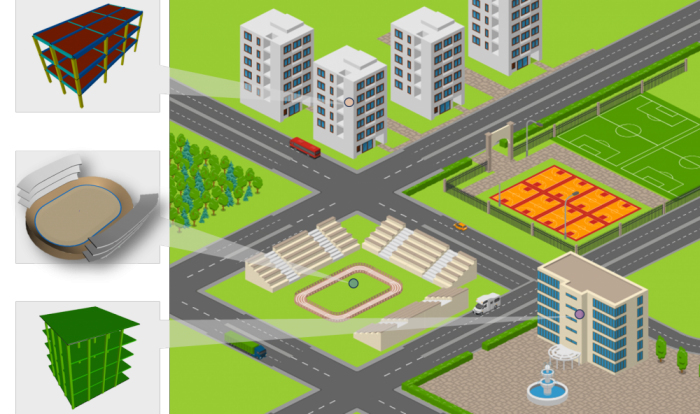Figure 1. Integrated urban system
Our project explores the integration of three key civil engineering systems—residential buildings, office buildings, and gymnasiums. The design focuses on ensuring environmental sustainability, accessibility, and urban planning, emphasizing how these components interact physically and functionally.
Key Components:
- Residential, Office, and Gymnasium Buildings: These structures are essential for the city’s stability and connectivity. Roads serve as crucial links, ensuring smooth access between residential, office, and gymnasium buildings. Together, these systems create a multifunctional and tightly connected urban space that supports various community activities.
Urban Planning Visions:
- Low-Carbon Practices: Our project prioritizes reducing environmental impact during construction by using different materials, minimizing waste, and optimizing resource use. By integrating residential and commercial spaces, we promote a mixed-use environment that reduces the need for long commutes, thereby lowering the city’s carbon footprint.
- High Accessibility: Roads are designed to ensure all residents can easily access workplaces and recreational facilities, promoting a smooth flow within the community. This connectivity is key to fostering an inclusive urban environment where mobility is convenient and efficient.
- Balanced City Systems: The arrangement of residential, office, and gymnasium buildings is carefully planned to maintain balance, considering proximity, noise levels, and privacy. This thoughtful placement ensures a harmonious living and working environment, enhancing residents’ comfort and productivity.
Through these measures, our city becomes a model of sustainability and livability. This project demonstrates how careful urban planning can have a significant impact on creating a cohesive, connected environment that supports a thriving community while prioritizing environmental sustainability.
Introduction|Individual Systems|Integration Context|Combined Ontology|Combined Parametric Model|Conclusion
